When did Poland regain independence? Various deadlines can be indicated. But November 11th seems to be the worst possible date.
On the front page of the Krakow weekly "Nowości Illustrowane" a white eagle flaunted. The coats of arms of Kraków and Poznań were placed on its outstretched wings. In the middle - the Warsaw mermaid. The bird's head was crowned with a crown. Above the whole composition there is a short, specific title:"Independent and united".
The next page, as the opening text of the number, was a poem with the title:"On the Day of the Resurrection." In one of the stanzas, the author emphasized that "the nobles did not give us the homeland," but that such were "God's destiny and judgments". He further stressed that the fight for freedom was over. And that we can now celebrate openly:
Today we can live peacefully among our brothers,
Nobody will rob us of the crops of our land anymore!
Today nobody will force a child to speak a foreign language,
The dear German tollbooth will no longer take care of the peasant!
Nobody will forbid us to think and feel our own way today,
And when I am going to serve in the army, it will be in the Polish army!
The issue was published in 1918. More specifically on October 19. And he was already clearly late then.
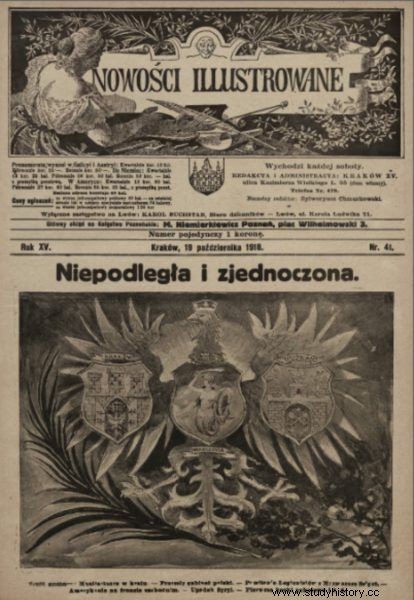
Front page of Illustrated News, October 19, 1918. The subject of the issue - regaining independence.
If you asked Poles at the time about it, they would say that Polish independence was announced almost two weeks earlier. Or even… two years earlier.
November 5, 1916. Façade independence on German terms
The first formal settlement took place in the middle of the Great War, on November 5, 1916. They were announced with a really impressive pump. In the column hall of the Royal Castle in Warsaw, the German Governor-General Hans von Beseler read the declaration of his emperor (and even two emperors, including the Austrian one), according to which an independent and independent Kingdom of Poland was to be established:
Civic state with hereditary monarchy and constitutional regime.
There were enthusiastic shouts of "long live Poland" from the room, the German military orchestra played God something Poland for so many centuries . White and red flags and triumphant appeals were hung in the city… Even on the town hall tower a white eagle appeared, the native language came to schools and offices, and the streets were given native names again.
The decision was aimed at deceiving Poles and persuading them to volunteer military service. In fact, however, Polish authorities began to emerge. First the Provisional Council of State, then the Regency Council.
According to the official line from the time of the war, it was on November 5th that the Republic of Poland regained its independence. It would be hard to expect, however, that this date will last longer. After all, it was about independence in German:a façade, stripped of concrete and under the constant influence of the partitioning power.
However, it was the dignitaries appointed by the "Act of November 5" - specifically, the three regents in Warsaw at the castle - who took another, this time independent step.
October 7, 1918. Polish authorities declare independence
When it became clear that the central powers had to fall and the end of the war was fast approaching, one of the regents, Prince Zdzisław Lubomirski, pushed through the idea of re-declaration of independence. Independence also from the Germans, and not - under their dictation.
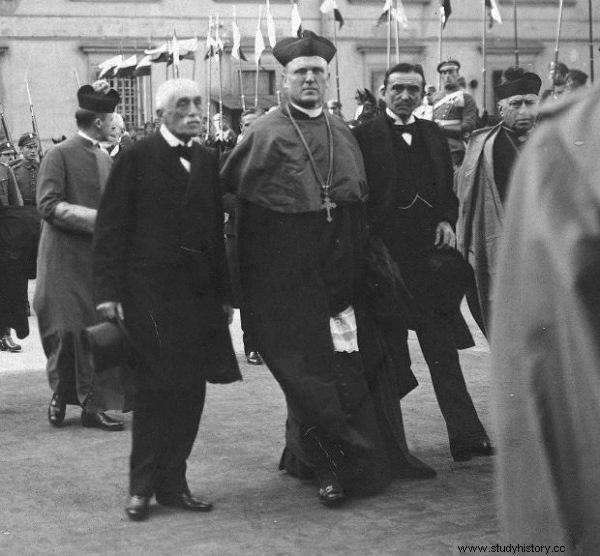
Members of the Regency Council established with the consent of the German authorities:Józef Ostrowski, Aleksander Kakowski and Zdzisław Lubomirski.
On October 7, 1918, a solemn appeal "to the Nation" was printed on the pages of the official "Polish Monitor". The regency council announced in it that here is "the great hour for which the entire Polish nation has been waiting eagerly".
Poles! Today our fate largely rests in our hands. Let us prove ourselves worthy of those mighty hopes which our fathers kept alive over the centuries in the midst of tribulation and misery. Let everything that divides us mutually be silent, and let one great voice sound:UNITED POLAND, INDEPENDENT POLAND.
The text no longer referred to the goodwill of the Hohenzollern emperor, but to the demands of the US president, Wilson. Regents explained that they were starting to work to create "an independent state encompassing all Polish lands, with access to the sea, with political and economic independence as well as territorial inviolability."
The promises were a quick formation of a government and the establishment of a democratic parliament that would "arrange state supreme power".
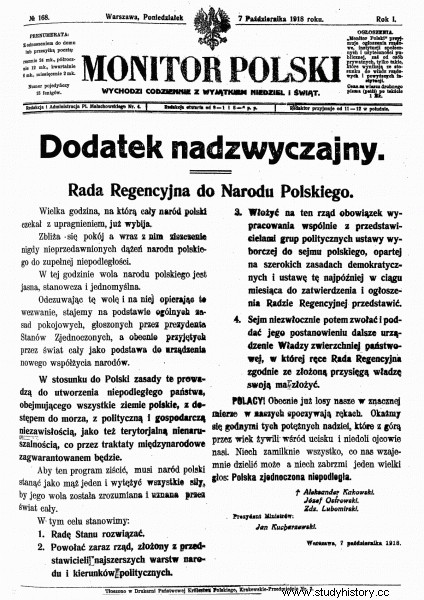
Extraordinary edition of Monitor Polski with the appeal of the Regency Council. Polish declaration of independence of October 7, 1918
The following day, all the major newspapers reprinted the proclamation, usually on the front page. It was generally felt that this document was the Polish declaration of independence. "Illustrated News" also referred to it when writing about the "Resurrection Day".
October 19, 1918. The first independent government in Poland
The decision of the Regency Council was received with great enthusiasm. The regents themselves - apart from Lubomirski, also Archbishop Aleksander Kakowski and the landowner Józef Ostrowski - could not even dream of a similar support.
Their political lineage was for Poles like a pain in the eye. And it was he who caused that the document, which in the fall of 1918 was considered the founding act of the new Republic, was quickly removed from the official history and from the Polish tradition.
Behind the Regency Council was the opinion of a faithful body, almost collaborative, walking on the belt of the Germans. It did not seem appropriate to celebrate a decision, made perhaps not by the enemies themselves, but by people appointed by the invader.
Anyway, the position of the regents in October was already significantly weakened. The governments they appointed were not the only ones.
The date of the rebirth of the Republic of Poland could therefore be considered the moment of the emergence of the first independent power in Poland, created in isolation from the ballast of the partitioning power. The earliest such government, historians consider the National Council of the Duchy of Cieszyn established on October 19, 1918.
It was a completely unique organ, if only because women accounted for a dozen or so percent of its members. A result that will not be repeated by any national cabinet - only men will sit in all of them until 1939. At the same time, however, the Cieszyn Council was only a district government, expressing ambitions not to rule Poland, but to join it.
October 27 or 31, 1918. Independence begins in Krakow
Another possible date for Polish independence is October 27. At that time, the Polish Liquidation Commission was established in Kraków. The first independent authority in one of the main centers of the state.
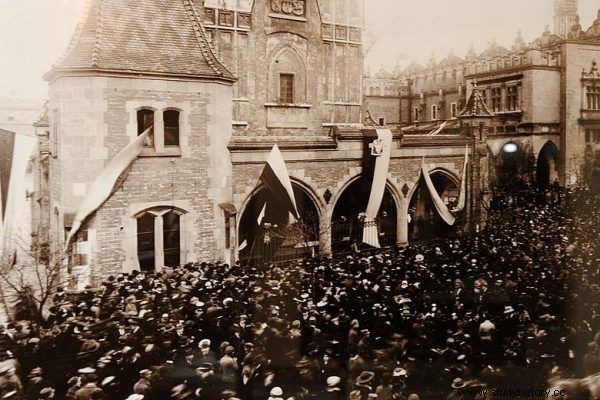
Krakow was the first? Polish flags on the market on October 31, 1918
The more we can talk about October 31:when the city was liberated from the rule of the Austrians, and thus Western Lesser Poland became the first district fully sovereign from the invader. It is no coincidence that it is often written that independence began in Kraków.
November 7, 1918. The first Polish government, at least according to some
This date has not gained a national rank. November 7th, something else. Many textbooks still say that it was then that the first truly Polish, independent government was established in Lublin.
Ignacy Daszyński's socialist cabinet was self-proclaimed, had the full support of only one party, and its program was so radical that it could not be applauded by a wider group of Poles. At the same time, however, it was this government - claiming that it had overthrown the "reactionary" regency council - that granted Poles full electoral rights and was the first to speak directly about the republic.
So November 7 could also be a day of independence.
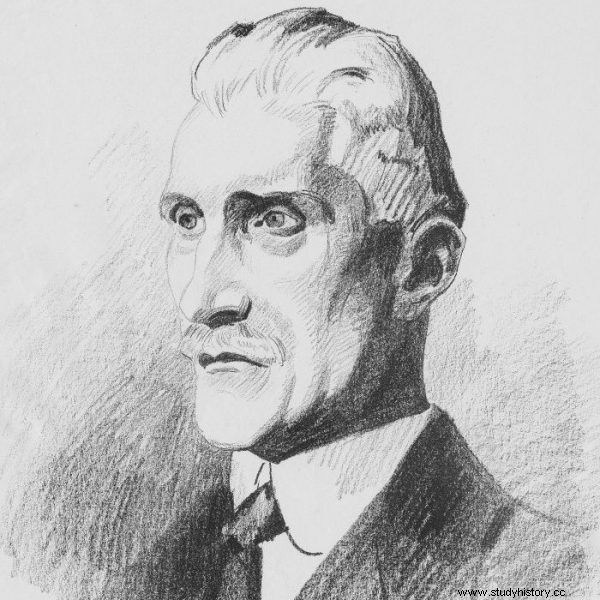
Ignacy Daszyński in a drawing by Stanisław Lentz from 1919
November 10, 1918. Because the pre-war propagandists lied perfectly
In fact, in early November, power was in the street. Daszyński did not exercise control over the situation, but also the regents did not have control over the situation. Only one man was capable of reaching the highest offices:the commander of the first Legions brigade and a former member of the state council, Józef Piłsudski, who had just been released from the German fortress.
Even Piłsudski's greatest enemies, his later critics and competitors, admitted that in these anarchy and uncertain moments he was the only possible candidate for the leadership of the state. His arrival to Poland and Warsaw was a new opening.
Jędrzej Moraczewski, a close associate of Piłsudski and the prime minister of the first government appointed by the Commander, wrote on this subject pictorially - and in line with the later state line:
On November 11, commander Józef Piłsudski returned to Warsaw after a year and a half captivity. After an enthusiastic welcome by the countless crowds besieging the Vienna Railway Station, the Commandant immediately got to work. He had a longer consultation with the Regency Council, which resulted in the regents resigning and putting all power into Piłsudski's hands.
These few sentences seem to fully explain why November 11 was considered the day of independence. The problem, however, is that Moraczewski ... did not tell the truth at all. The propaganda image, stubbornly repeated until today, essentially differs from historical reality.
The commander was not greeted by crowds (because hardly anyone knew about his return). Above all:all this did not happen on November 11. Piłsudski had returned to Poland the day before , then he did consult with the regents, and then the preliminary decision was made to hand him over the sovereignty over the country.
So if you are an advocate of linking Polish independence with the future Marshal, then the date should be moved back one day.
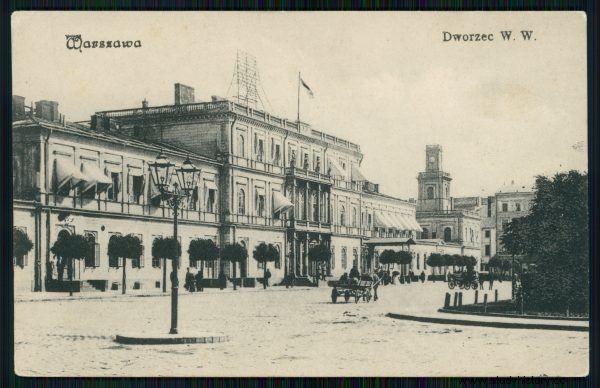
The Vienna train station in Warsaw on a postcard from before 1913. This is where the train carrying Józef Piłsudski arrived on November 10
November 14, 1918. Because then the power ceased to be on the street
Alternatively, it can also be moved forward three days:on November 14, the regents finally relinquished their prerogatives, and Piłsudski became the Chief of State.
As for November 11, of course, a lot happened then. However, no one wrote on an ongoing basis that it was the day of regaining independence; and hardly anyone thought so. It was simply on November 11 that the Germans agreed to a ceasefire, thus ending the First World War. And this date from universal history was automatically extended to the history of the homeland.
Even if it did not correspond to the facts, it required bending events or even introducing outright lies into the textbooks.
Bibliography:
The article was based on materials and literature collected by the author during the work on the book "Niepokorne damy. Women who won an independent Poland ” .
